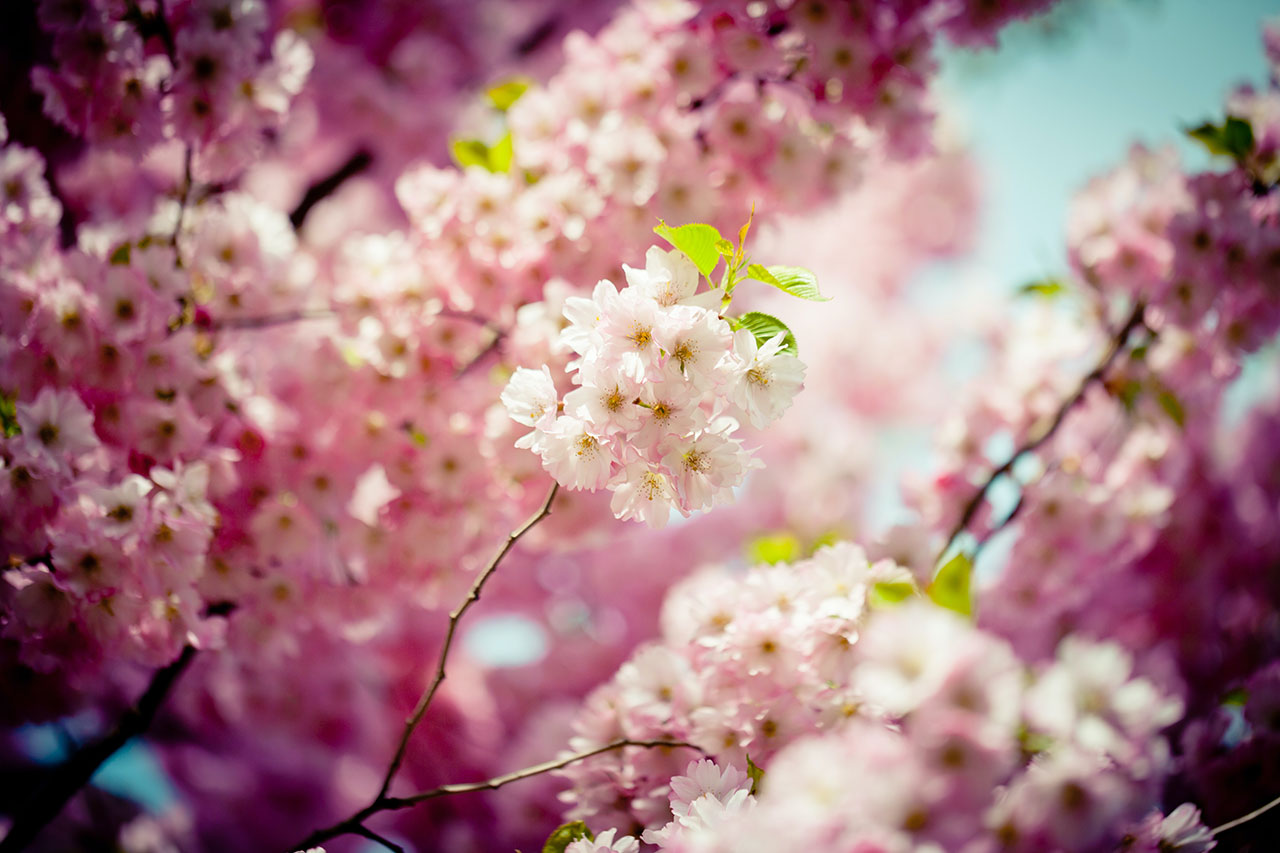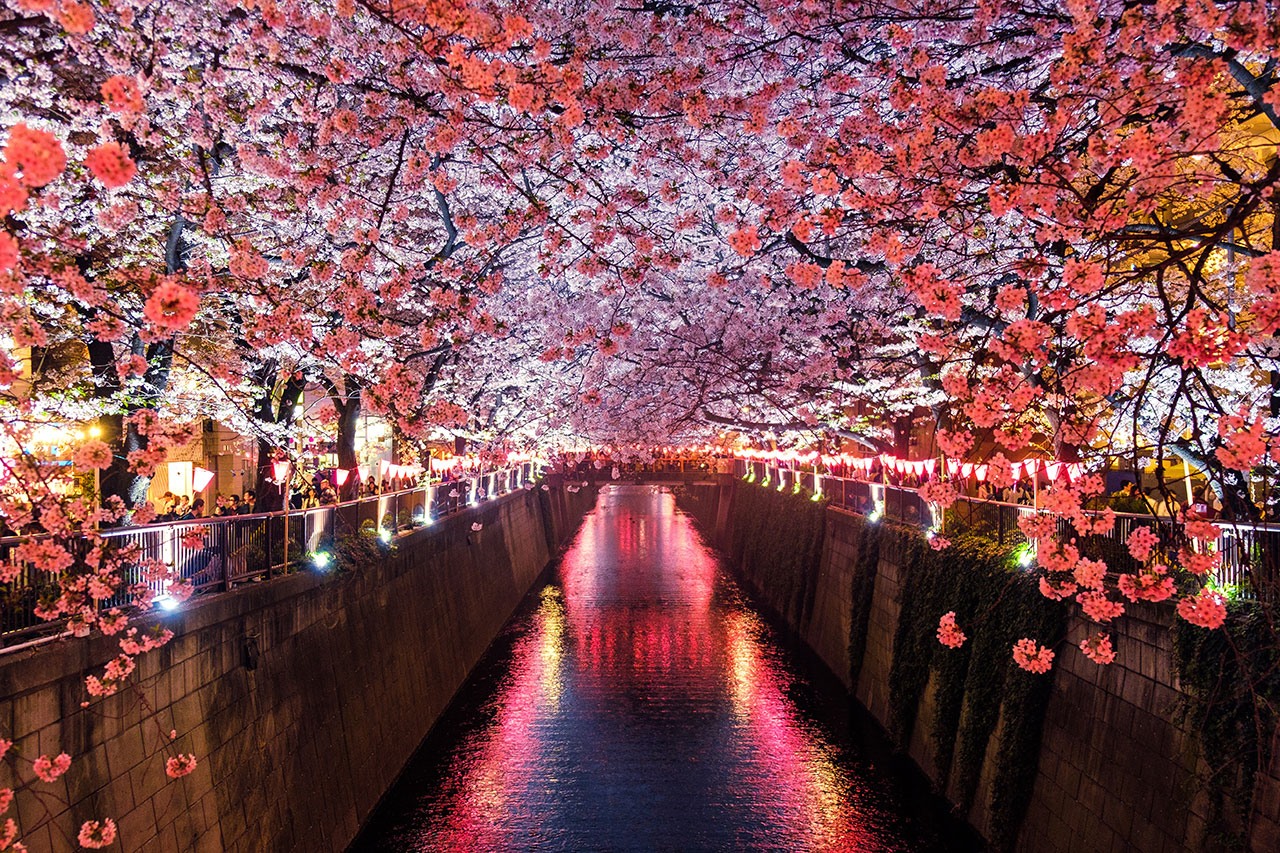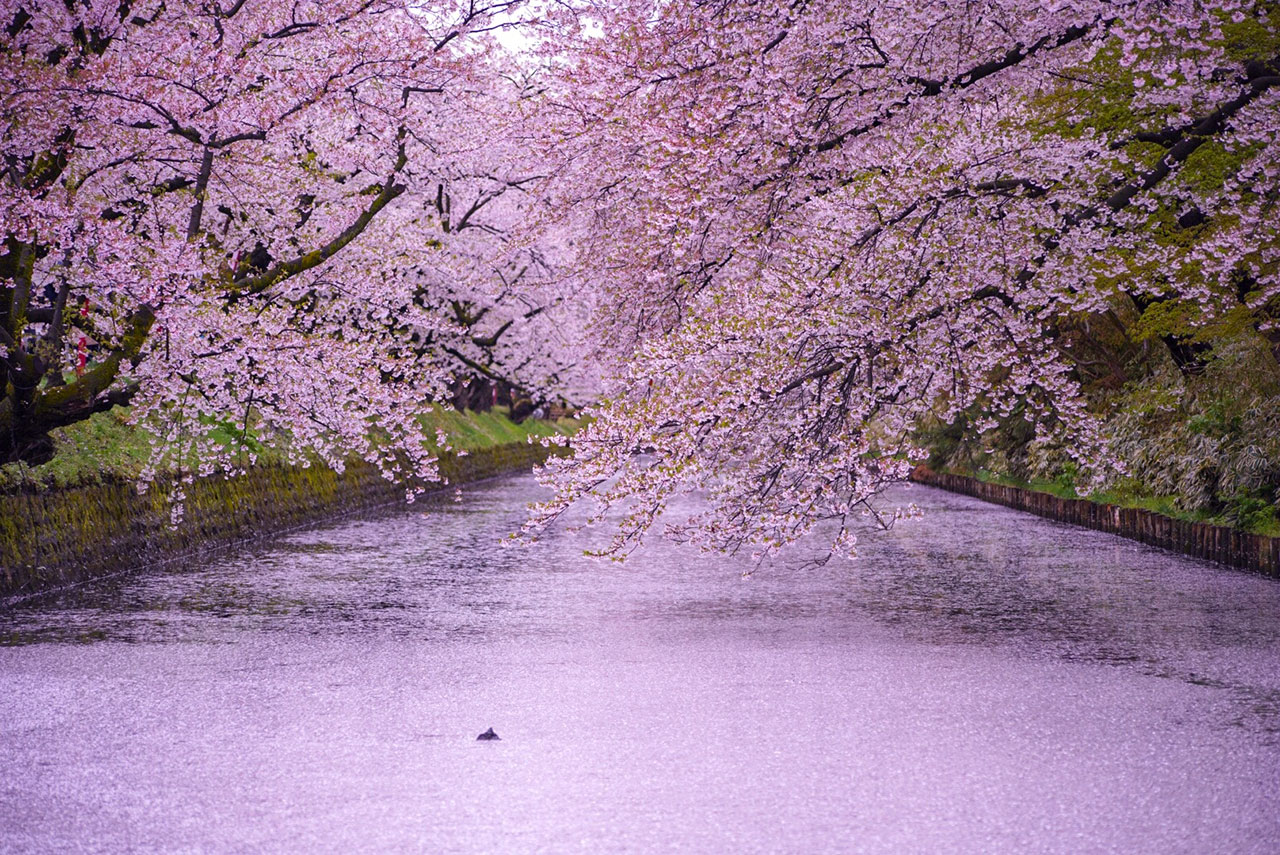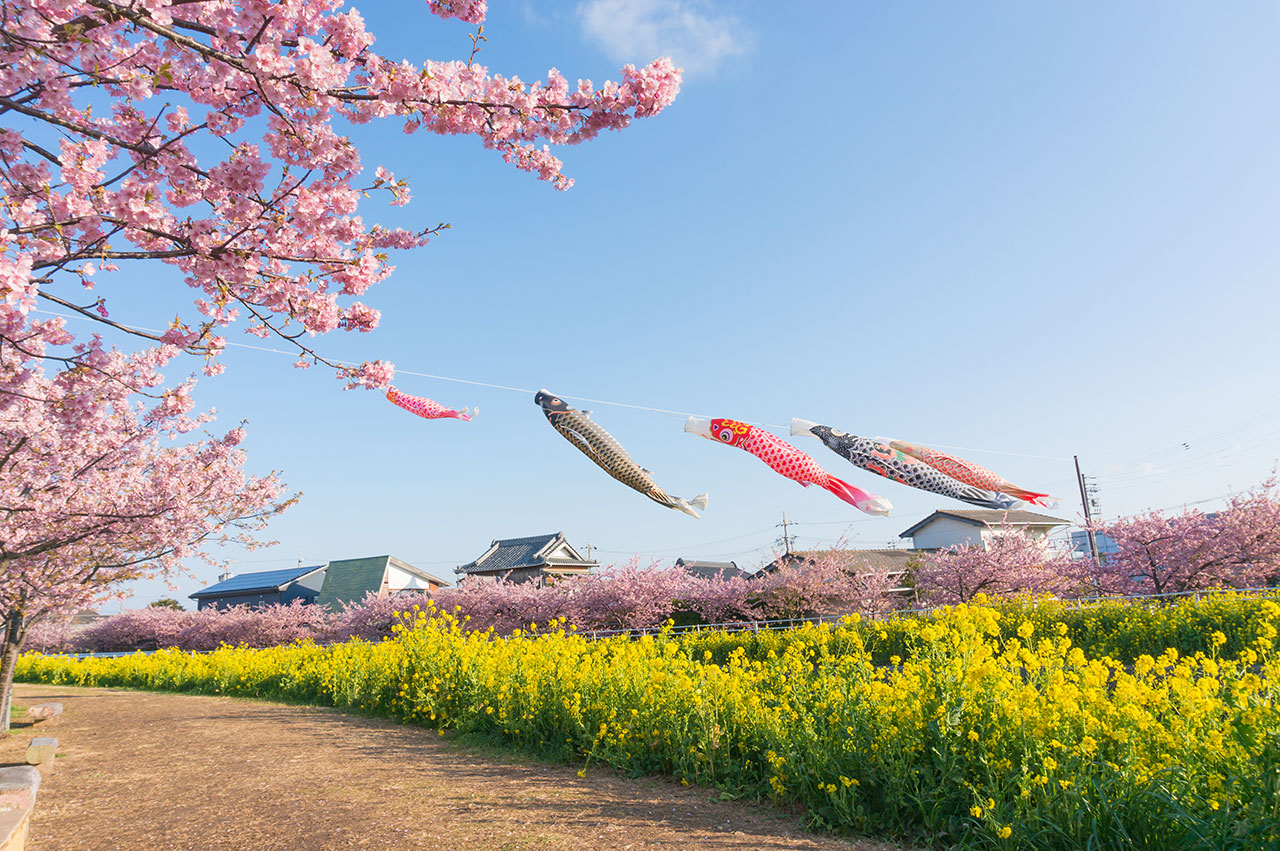April: Cherry Blossom
March 17, 2021

Synonymous with Japan, the charm of cherry or sakura blossom lies in its delicate and short-lived existence. While in many countries they are simply admired in passing, in Japan their blooming is tracked and highly anticipated. As the flowers appear, the floors beneath are carpeted with picnic mats and weekends are filled with flower-viewing visits.
Japan’s deep appreciation of the blossoms is a reflection of their symbolic value in ancient aesthetic principles. Their role in the announcement of spring reflects hope and renewal, but also highlights the temporary nature of beauty and life as a whole. Their transient nature inspires the principle of mono no aware, which is an awareness of the impermanence of things. Often only lasting around two weeks on the tree, the petals are then blown away in the wind and scattered across the ground. Here too, they are appreciated, with a haphazard pattern that’s impossible to recreate forming a perfect display of wabi-sabi—a concept focused on accepting imperfection as a source of true beauty.

Meguro, Tokyo
With light-hearted parties known as hanami (meaning flower viewing) being held in parks, gardens and temples across the country, hanami is a fantastic experience for those visiting Japan. With trees planted outside schools, along streets and in almost every local park, it’s not difficult to find a tree to admire, but there are some truly amazing destinations with unusual varieties and carefully cultivated trees that create a special hanami experience.
Over 100 varieties of cherry blossom can be found across Japan including ancient wild examples and their carefully cultivated followers. Varying from white to dark pink, from five petals to a hundred and from early to late blooming, the variety of blossoms is astounding.

Hirosaki, Aomori
Somei Yoshino is one of the most common varieties, appearing in parks all over Japan. The oldest known tree is around 130 years old and is located in Hirosaki in Aomori, but they are believed to have been originally cultivated by keen gardeners in Komagome in Toshima, Tokyo. They added Somei (the area’s old name) to differentiate the variety from the trees of Mt. Yoshino in Nara Prefecture. With white and pale-pink flowers, the blossoms appear before the leaves, giving the trees a uniform coloring perfect for hanami. In Toshima, the city has created a special sakura walking trail which includes an Edo-era gate and warehouse, Saifuku-ji and Homyo-ji temples, the Somei-Yoshino Memorial Park, the Somei-Yoshino Sakura no Sato Park and Somei Cemetery. All are filled with beautiful blossoms and have unique elements such as the two parent trees (in the Memorial Park) and the cherry tree nursery with trees being grown for parks across Japan (in the Sakura no Sato Park). Be sure to try Sakura Mochi, a traditional pink sweet made with Somei-Yoshino petals thanks to their strong scent—many cafes and stalls sell this over Spring. The flowers are in bloom from Mid-March to Early April and make for a great day out exploring the local neighborhood.

Kawazu, Shizuoka
Located on the Izu peninsula in Shizuoka prefecture, the small town of Kawazu has their own unique variety of cherry blossom. Offering a longer blooming period, the Kawazu variety also holds one of the earliest chances to see cherry blossom around the Tokyo area. Discovered to be a natural combination of two varieties—the Oshimazakura and the Kanhizakura—the tale goes that a small bud was found among weeds beside the Kawazu river and was planted in 1955. Flowering in 1966, it has continued ever since and locals have carefully cultivated it to fill the town with long-lasting blossom. The small town holds a festival during the blooming season which lasts from early February to early March with food stalls and evening illuminations. As the area is known for citrus production, it’s a great opportunity to try some of their locally made lemonades and mikan sweets before soaking in one of the area’s hot springs.
Somei Yoshino variety blooms at different times in different parts of Japan. In the Kanto region, the most common time of bloom is from the end of March to early April, but other regions such as Kyushu and Hokkaido offer sakura viewing opportunities at other times. For more information, please visit the following website.
Release of 2021 Cherry Blossom Forecast (6th forecast)
For more details, contact DMC Japan to discuss ideas, locations and rates.
Contact Us


